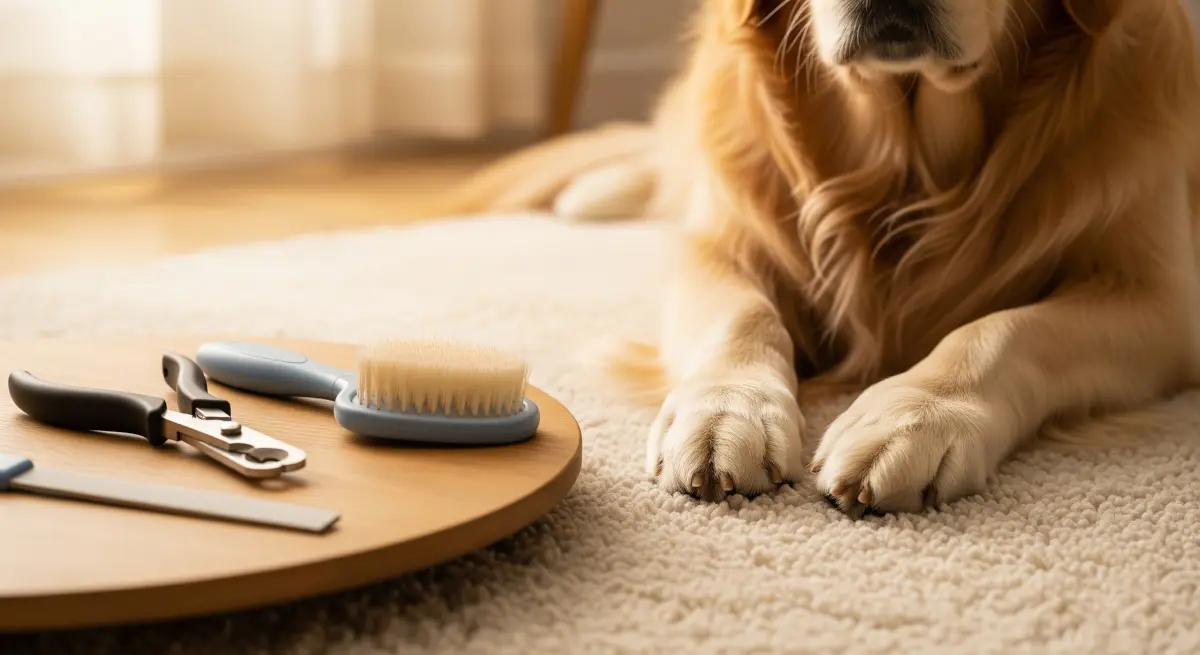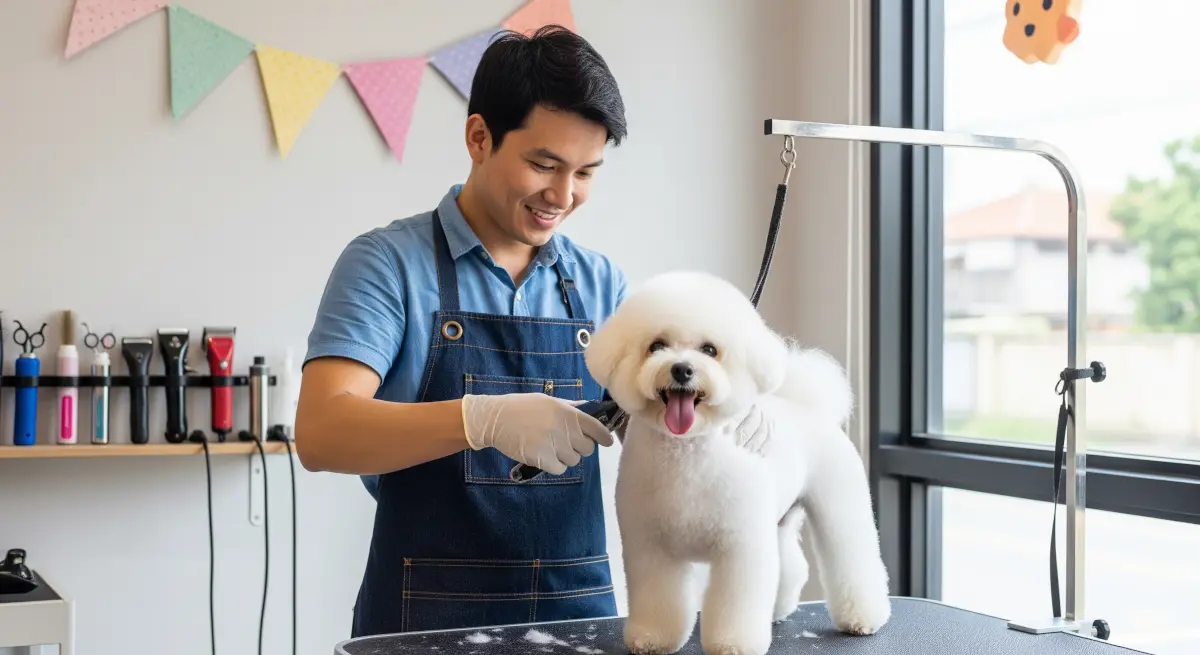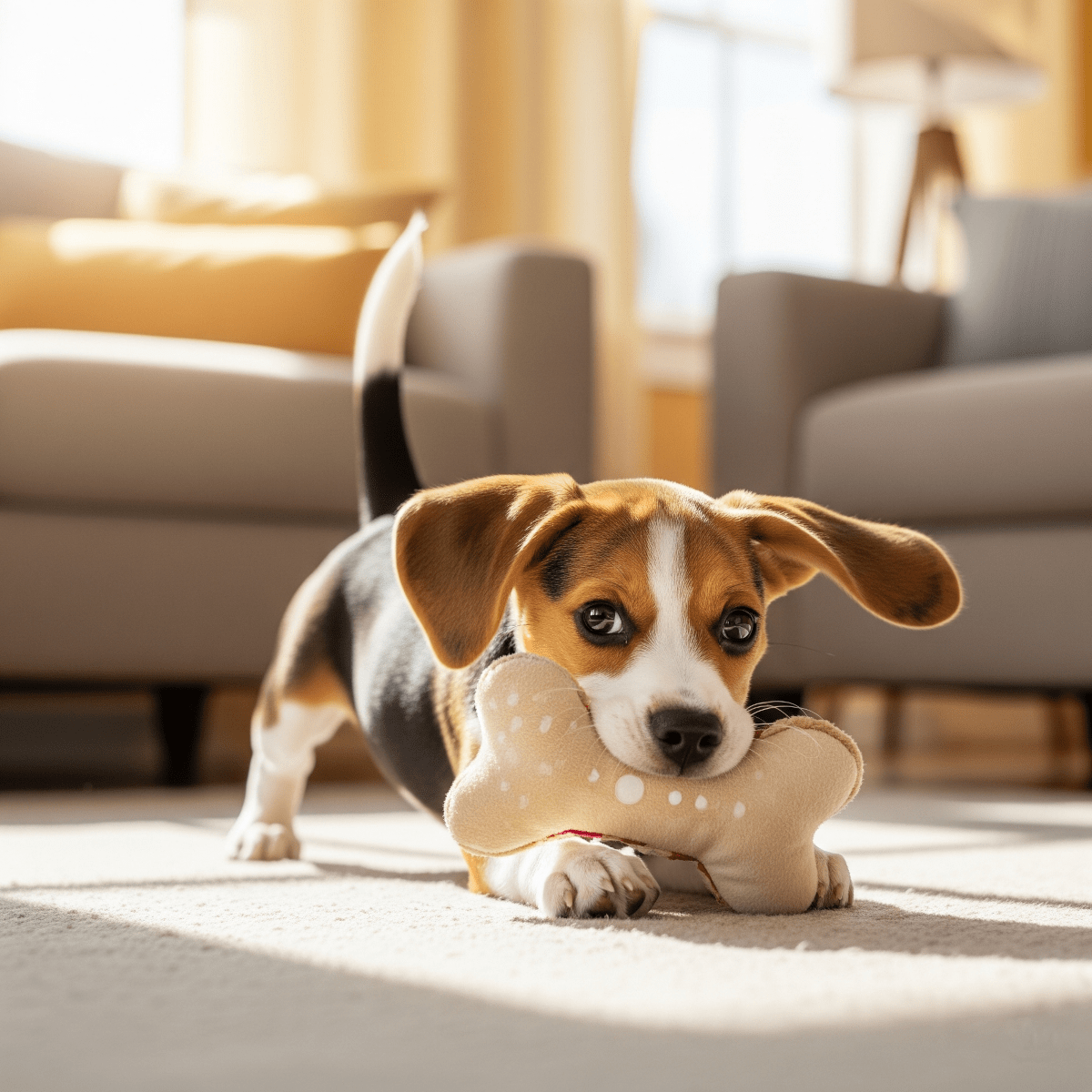How to be a good dog owner starts with understanding that you’re about to welcome a family member who will depend on you for the next 10-15 years. For new dog owners, this journey can feel overwhelming – but here’s the truth: 63.4 million American households have successfully navigated this path, and with the right preparation and mindset, you can too. Whether you’re getting a dog for the first time or looking to become a better dog owner, this comprehensive new dog guide will transform your anxiety into confidence. You’ll discover the essential first-time dog owner tips, a practical new dog owner checklist, and proven strategies to help you become the best dog owner your furry friend could ask for.
Table of Contents
- Your First Week: Critical Steps Every New Dog Owner Must Take
- The Ultimate New Dog Owner Checklist: What to Buy Before Day One
- Overcoming First-Time Dog Owner Challenges
- Building a Strong, Lasting Bond with Your Dog
- Setting Yourself Up for Long-Term Success
- Frequently Asked Questions
Your First Week: Critical Steps Every New Dog Owner Must Take
The first week with your new dog sets the foundation for everything that follows. How to be a great dog owner begins with nailing these seven crucial steps that will make or break your early experience.
Schedule That Veterinary Visit Immediately
Your first priority is scheduling a comprehensive health check within 48 hours of bringing your dog home. This isn’t just about vaccines – your vet will assess your dog’s overall health, discuss preventive care for fleas, ticks, and worms, and create a customized health plan. Many new dog owners make the mistake of waiting “to see how things go,” but early intervention prevents costly problems later.
Create a Safe Haven Space
Every dog needs a designated comfort zone where they can retreat and feel secure. Set up a quiet area with a comfortable bed or crate, favorite toys, and familiar scents. This space becomes your dog’s sanctuary during the overwhelming adjustment period. For first time dog owners, this step dramatically reduces anxiety-related behavioral issues.
Establish Training Foundations
Start with basic commands immediately: sit, stay, come, and leave it. These aren’t just tricks – they’re safety tools. Begin crate training if you’re using one, and establish clear house rules from day one. Consistency during this period determines how quickly your dog adapts to your household routine.
Create Feeding Routines
Fixed meal times create structure and prevent obesity – a growing concern among American pets. Feed your dog at the same times daily, in the same location, using the same bowl. This routine becomes an anchor point that helps your dog understand their new schedule.
Introduce Gradual Socialization
Careful exposure to new people, environments, and situations builds confidence without overwhelming your dog. Start small – perhaps a neighbor meeting your dog in your yard before attempting busy sidewalks or dog parks. This measured approach prevents fear-based behavioral problems.
The Ultimate New Dog Owner Checklist: What to Buy Before Day One
Being prepared with the right supplies transforms those first chaotic days into smooth sailing. Here’s your essential shopping list organized by priority:
Sleep and Comfort Essentials
- Appropriately sized crate or dog bed
- Washable, waterproof bed liner
- Comfort toys (stuffed animals or rope toys)
- Blankets for warmth and familiarity
Feeding Supplies
- Stainless steel or ceramic food and water bowls
- High-quality dog food appropriate for your dog’s age and size
- Slow-feeder bowl if your dog eats too quickly
- Airtight container for food storage
- Training treats (small, soft pieces work best)
Grooming and Health Items
- Dog-specific brush or grooming tool
- Nail clippers designed for dogs
- Dog toothbrush and toothpaste
- Enzymatic cleaner for accidents
- First aid supplies (gauze, tape, antiseptic)
Exercise and Training Tools
- Adjustable collar with ID tag
- 6-foot leash (avoid retractable leashes initially)
- Waste bags and holder
- Interactive toys for mental stimulation
- Training clicker (optional but helpful)
Budget approximately $200-400 for these initial supplies, depending on your dog’s size and your choice of quality. Remember, buying quality items upfront often saves money in replacements later.
Overcoming First-Time Dog Owner Challenges
Even with preparation, new dog ownership presents predictable hurdles. Here’s how to handle the most common situations like a seasoned pro.
Managing the Financial Reality
The American Pet Products Association reports that dog owners spend an average of $1,480 annually on their pets. Plan for regular expenses like food, preventive veterinary care, and grooming, plus an emergency fund for unexpected health issues. Many first-time dog owners underestimate these costs and face difficult decisions later.
Dealing with House Training Accidents
Accidents are inevitable, especially with puppies or newly adopted dogs. Clean thoroughly with enzymatic cleaners that eliminate odors completely – regular household cleaners won’t prevent repeat incidents in the same spot. Maintain a consistent schedule: outside first thing in the morning, after meals, after naps, and before bed.
Addressing Separation Anxiety
Many dogs experience stress when left alone in their new environment. Start with very short departures (5-10 minutes) and gradually increase duration. Leave engaging toys or puzzle feeders to keep your dog occupied. Never make a big fuss when leaving or returning – this creates more anxiety around your departures.
Navigating Food Transitions
Sudden diet changes cause digestive upset. If switching foods, mix increasing proportions of new food with decreasing amounts of the old food over 7-10 days. Monitor your dog’s stool consistency and energy levels during this transition period.
Building a Strong, Lasting Bond with Your Dog
How to be the best dog owner isn’t just about meeting basic needs – it’s about creating a partnership built on trust, understanding, and mutual respect.
Learn Your Dog’s Communication Signals
Dogs communicate constantly through body language. Relaxed ears, soft eyes, and loose body posture indicate contentment. Stiff posture, whale eyes (showing whites), and lip licking may signal stress or discomfort. Understanding these signals allows you to respond appropriately to your dog’s emotional state.
Establish Daily Connection Rituals
Dedicate specific times each day for focused interaction – morning greetings, evening training sessions, or bedtime cuddles. These consistent touchpoints strengthen your bond and provide structure your dog can depend on. Even 15 minutes of undivided attention makes a significant difference.
Use Positive Reinforcement Consistently
Reward good behavior immediately with treats, praise, or play. This positive approach builds confidence and enthusiasm for learning. Avoid punishment-based methods, which can damage trust and create fear-based compliance rather than genuine cooperation.
Provide Mental and Physical Stimulation
A tired dog is typically a well-behaved dog. Combine physical exercise with mental challenges like puzzle toys, training sessions, or scent games. Different breeds have varying exercise needs – research your dog’s specific requirements and adjust accordingly.
Setting Yourself Up for Long-Term Success
Being a good dog owner is a marathon, not a sprint. These strategies ensure you and your dog thrive together for years to come.
Commit to Lifelong Learning
Dog training and care evolve constantly. Stay informed through reputable sources like the American Veterinary Medical Association, ASPCA, and American Kennel Club. Consider joining local dog training classes or online communities where experienced owners share insights.
Maintain Preventive Healthcare
Regular veterinary check-ups, vaccinations, and parasite prevention are non-negotiable aspects of responsible ownership. Establish relationships with a primary veterinarian and identify emergency clinics in your area. Keep detailed health records, including vaccination dates and any medication reactions.
Adapt as Your Dog Ages
Your dog’s needs will change throughout their life. Puppies require different nutrition and exercise than senior dogs. Stay attuned to these changes and adjust your care accordingly. What works at 6 months may not work at 6 years.
Build a Support Network
Connect with other dog owners, veterinary professionals, and training experts. Having people to consult during challenging times or celebrate milestones with makes the journey more enjoyable and less isolating. Many communities have dog owner groups or training clubs that welcome newcomers.
Frequently Asked Questions
How long does it take to adjust to being a first-time dog owner?
Most new dog owners feel comfortable with basic routines within 2-4 weeks, but full adjustment can take 2-3 months. Your dog will also need this time to settle into your household. Be patient with both yourself and your pet during this learning period. Every dog is different, and some may adapt faster or slower than others.
What’s the biggest mistake first-time dog owners make?
Inconsistency in rules and routine is the most common error. Dogs thrive on predictability, so changing expectations confuses them and slows learning. Decide on house rules before bringing your dog home and ensure all family members enforce them consistently. This includes feeding times, sleeping arrangements, and behavioral expectations.
How much exercise does my new dog really need?
Exercise needs vary dramatically by breed, age, and health status. Most adult dogs need at least 30 minutes to 2 hours of exercise daily, but this should be split between physical activity and mental stimulation. Start conservatively and gradually increase based on your dog’s response. Puppies need less intense exercise but more frequent short play sessions.
Should I crate train my new dog?
Crate training benefits most dogs by providing security and aiding house training. The crate should be large enough for your dog to stand, turn around, and lie down comfortably, but not so large they can eliminate in one corner. Never use the crate as punishment – it should remain a positive space your dog enjoys.
When should I start training my new dog?
Training should begin immediately, but keep initial sessions short (5-10 minutes) and positive. Focus on basic commands like sit, stay, and come, plus house training. Formal obedience classes can typically start once your dog has completed initial vaccinations, usually around 12-16 weeks of age for puppies.
How do I know if my dog is happy and healthy?
Happy, healthy dogs display consistent appetite, regular bathroom habits, playful behavior, and social engagement with their family. Warning signs include sudden changes in eating, drinking, or bathroom habits, lethargy, excessive panting, or withdrawal from normal activities. When in doubt, consult your veterinarian – early intervention often prevents minor issues from becoming major problems.
Ready to Begin Your Journey as an Exceptional Dog Owner
How to be a good dog owner ultimately comes down to commitment, consistency, and genuine care for your dog’s physical and emotional well-being. You now have the essential knowledge and practical tools needed to navigate those crucial first weeks and months successfully. Remember that every experienced dog owner was once in your position, feeling uncertain but excited about the journey ahead. Trust the process, be patient with yourself and your new companion, and don’t hesitate to seek help when you need it. Your dedication to learning and growing as a dog owner will create the foundation for years of joy, companionship, and unconditional love. Welcome to the wonderful world of dog ownership – your four-legged family member is lucky to have someone who cares enough to do it right from the very beginning.





